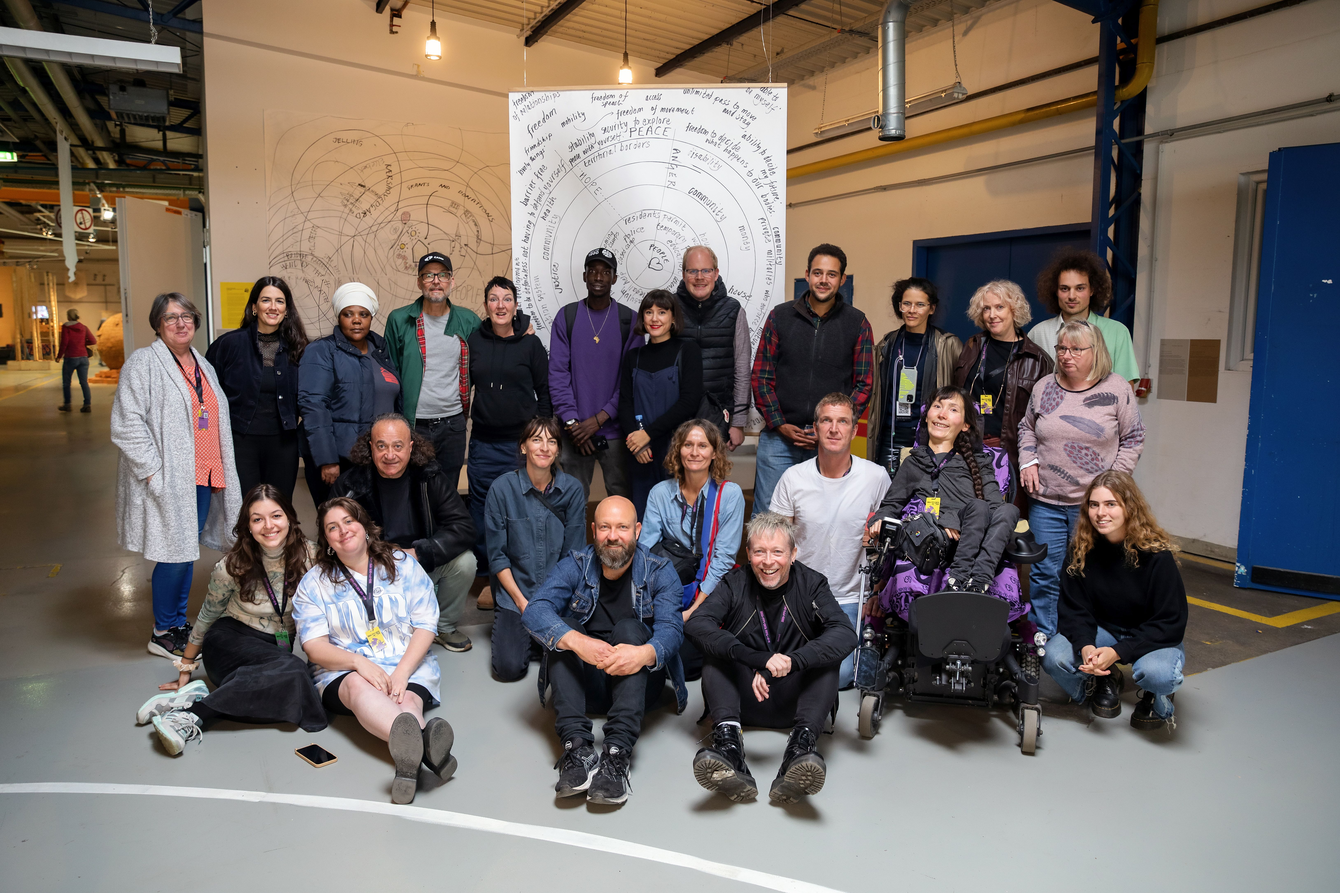‘Our communities - neurodivergent people and refugees/asylum seekers - share the lack of value that the system places upon them. They both have a history of ‘bare life’ in the public realm if we want to use Agamben’s term. This means that generally speaking public systems of care and control do not care about the ways that people can live their lives - or quality of the life lived by our communities, they only care about maintaining life and order within the system. Taking this into account, our work did not seek to equate our communities, but to create a temporary coalition, in order to outline a utopia of alliance’.
Carlota Mir, Notes on Navigating Systems of Care and Control, (n/p).
‘A few days before, I had been in Milan and met Erby, Reza and Iswanto from ruangrupa, as part of a residency program co-curated by Paola Pietronave, a friend and mediator at documenta fifteen. It was an important moment, where we found ourselves after the rush and intensity of Kassel. If I had doubts about what was left of 100 days of exhibition and almost two years of work together, the answer was strangely simple and immediate. We hugged, as friends do when they think they know little about each other, but have shared a lot. We slowly began to understand how we were, what was happening in our territories, in our ecosystems and according to which priorities the artistic projects and collectives of which we are part were advancing’.
Sara Alberani, ‘Our Future has the Shape of a Cosmology’, in Alberani and Mir (eds), Massaging the Asylum System: Creative Strategies of Care, visÀvis special issue.
‘The avenue explored by Trampoline House and Project Art Works in their joint workshops was one that took art’s visual and political agency seriously, casting imagination and its visual materializations as what the feminist art historian Marsha Meskimmon has called ‘a potential “strong card” in transformative politics’. ‘Massaging the Asylum System’ evokes the curator and art historian Minh Nguyen’s perceptive observation that documenta fifteen was geared to exploring networks of relations as alternative paths for intimacy, support and allyship, with an emphasis on collectivity and friendship’.
Anne Ring Petersen, ‘The Art of Prefiguration: Building a Future Collectivity at documenta fifteen’.
‘The Cosmologies practised by Kate within Project Art Works became the map of encounter within our own communities and visitors. Circles multiplied, everyone drew their own and crossed others, a few straight lines marked common tangents and we could visualise what a better system of asylum and care means. An effort from the inside out. "Let the refugees free inside the camps, let them work, let them make some money, let the kids go to the normal schools, not to asylum seeking schools. These kids are the future of tomorrow, why are we destroying their lives? Why are we killing them softly?" said Shakira Kasigwa Mukamusoni during the workshop 'Massaging the Asylum System - Creative Strategies of Care' in Kassel. Being asylum seekers and feeling like impostors within a system that works better without one's presence, brings with it the anger accompanied by trauma and depression of those who see no future, and wait without knowing whether they will have the right to live, living under slow social death conditions’.
Sara Alberani, ‘Our Future has the Shape of a Cosmology’, in Alberani and Mir (eds), Massaging the Asylum System: Creative Strategies of Care, visÀvis special issue.
